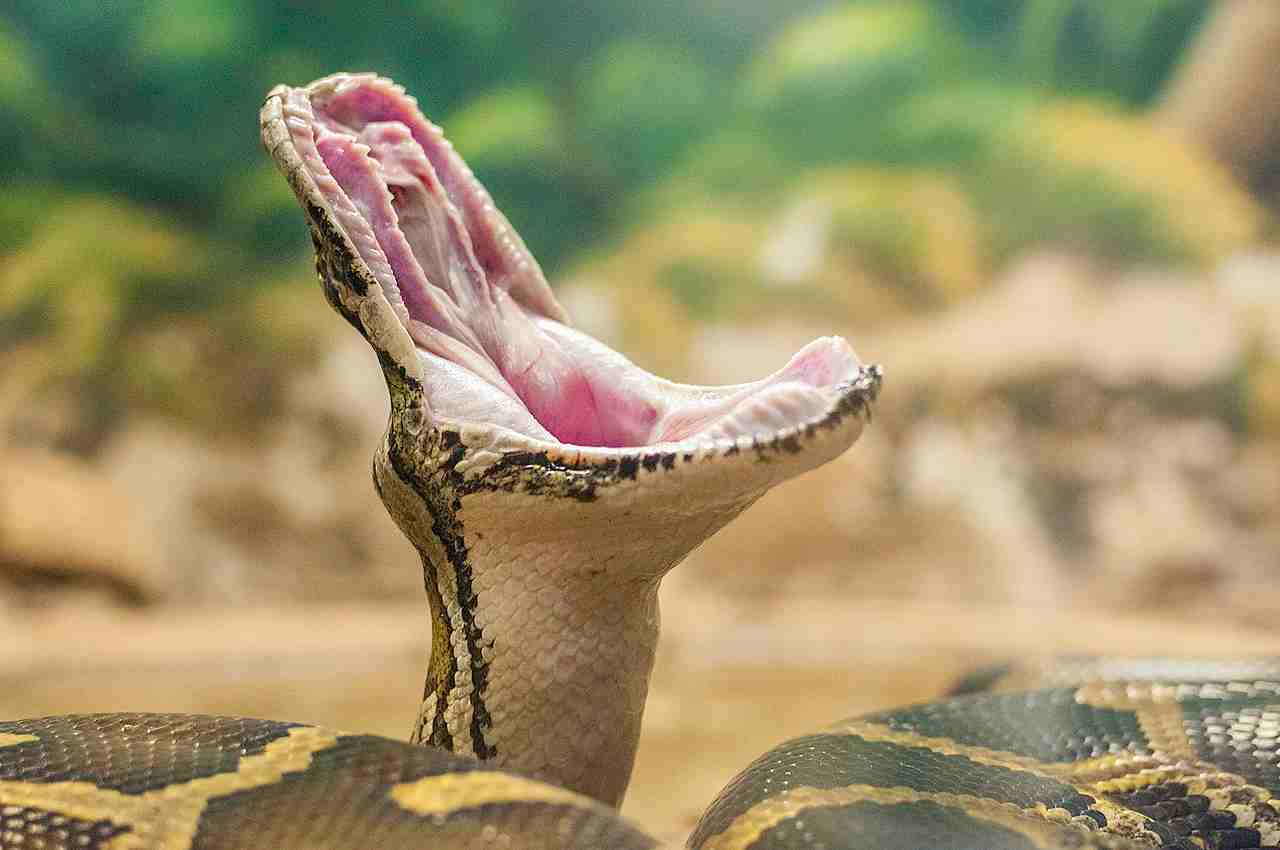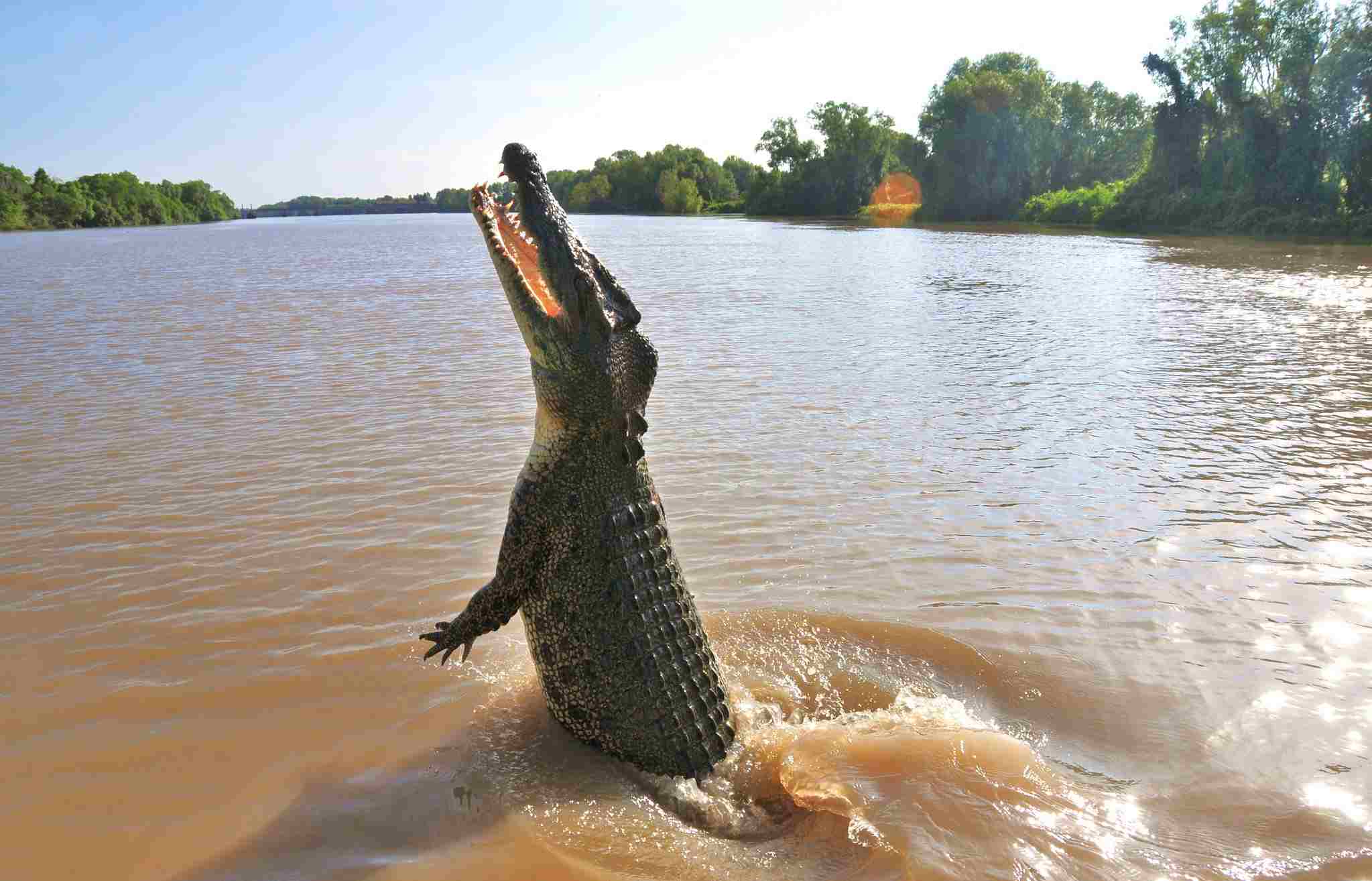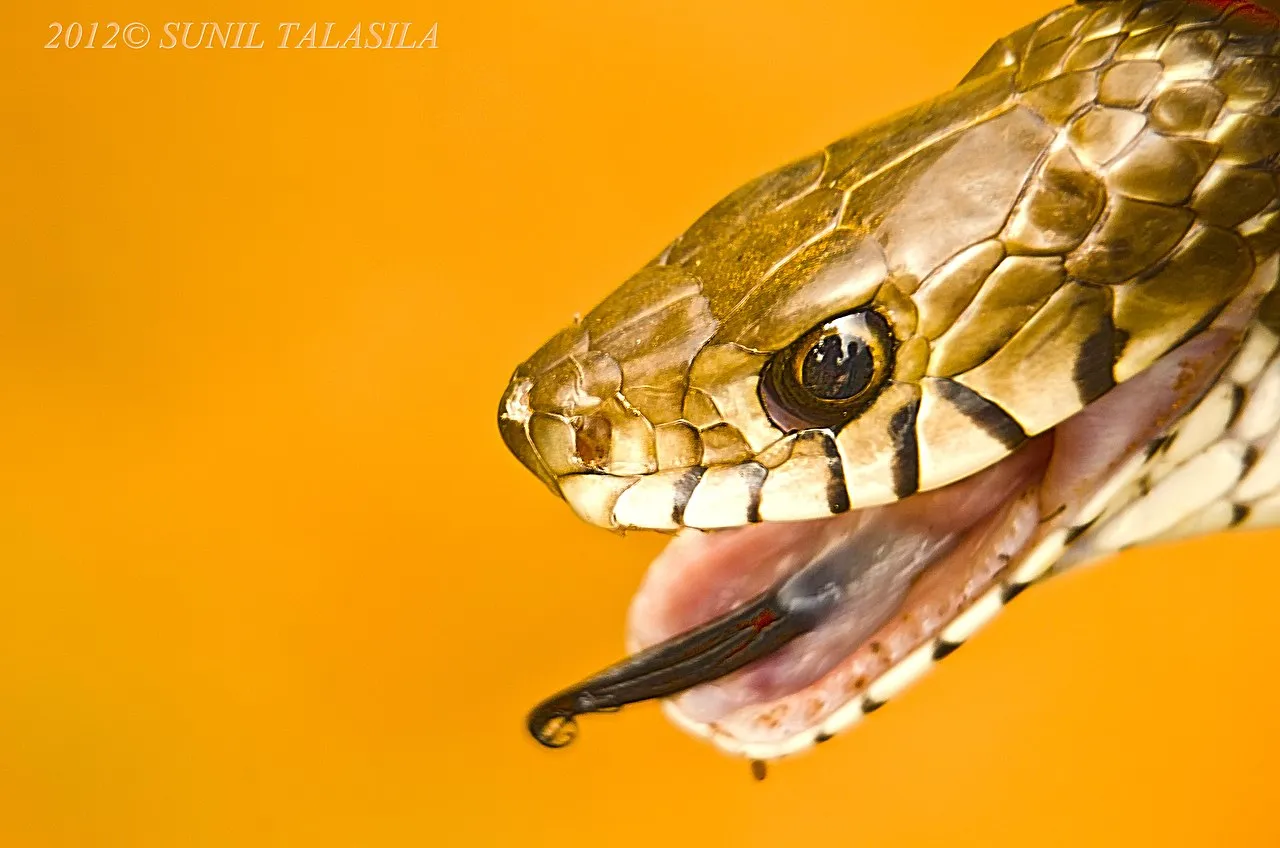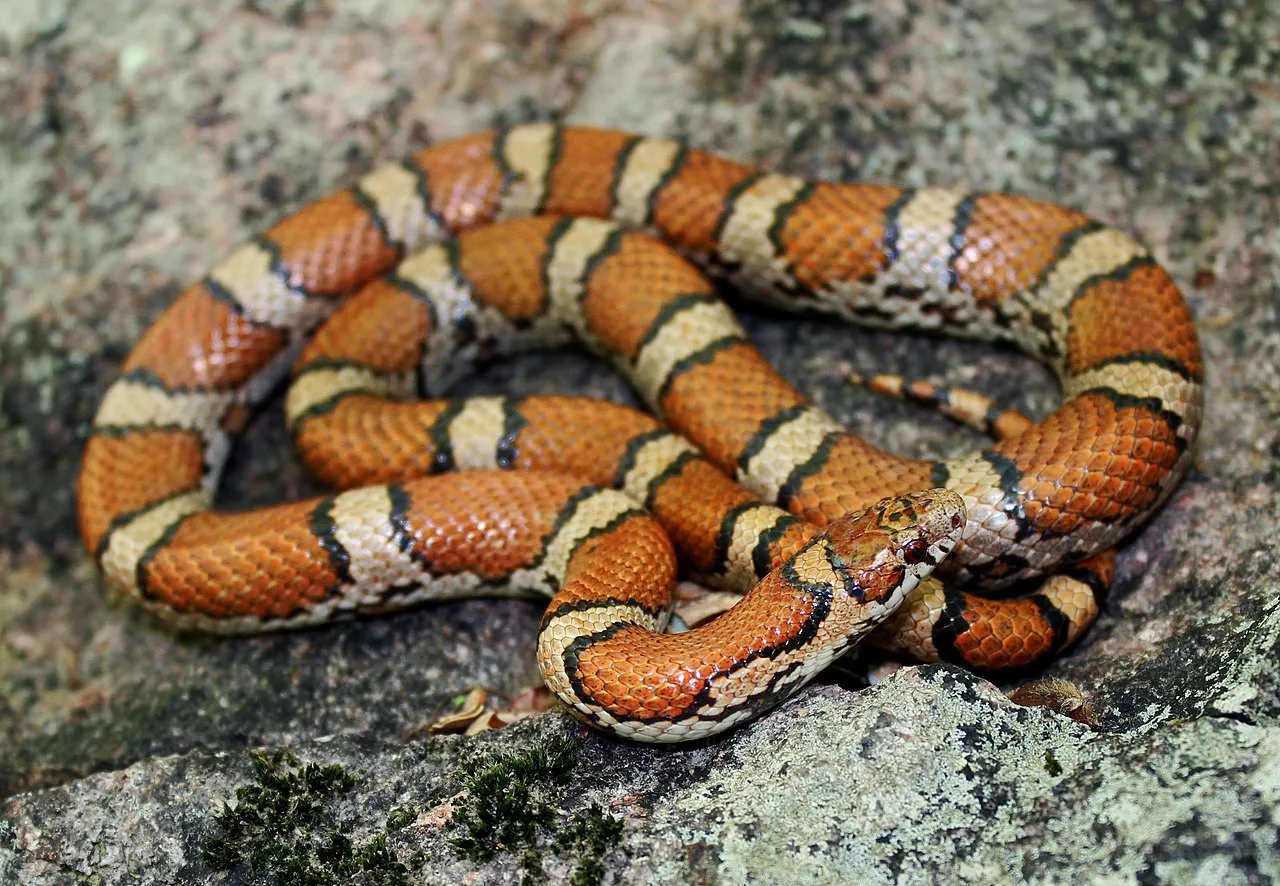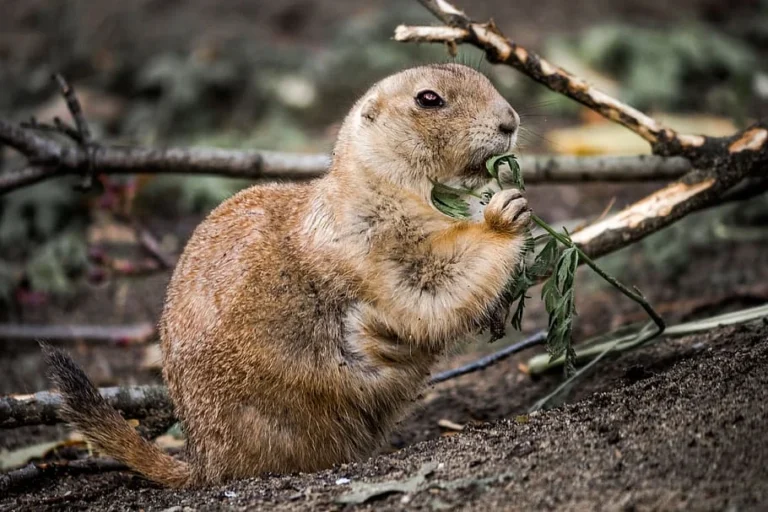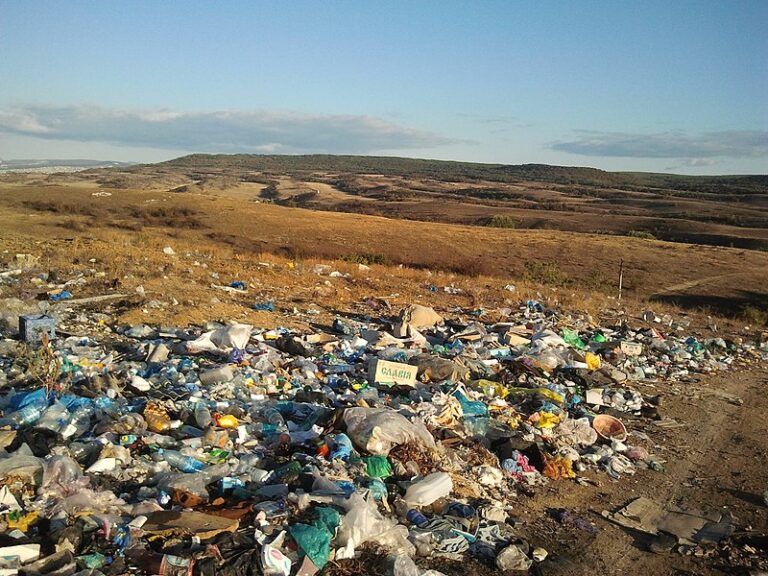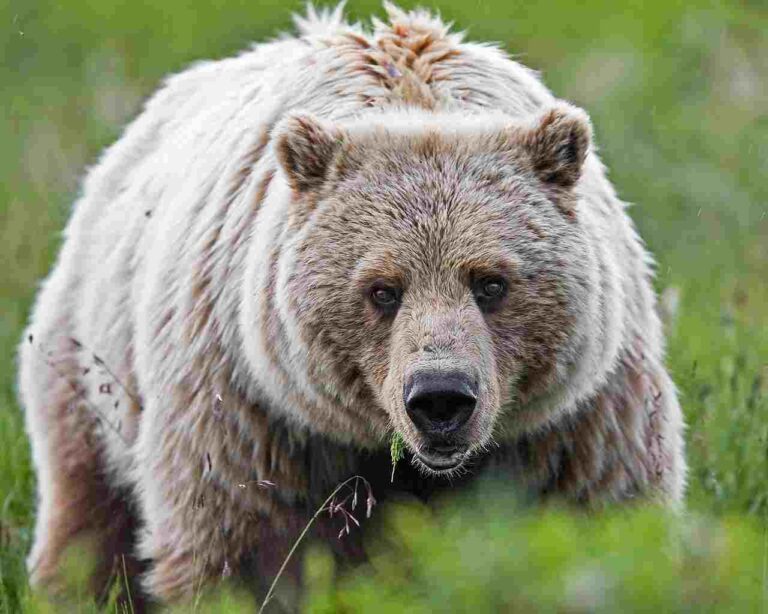23+ Most Dangerous Animals In Australia Discussed
1. Saltwater Crocodile
The saltwater crocodile, known as “saltie,” is the largest reptile on earth and one of Australia’s most dangerous predators. Found in northern Australia, it inhabits estuaries, rivers, and coastal regions. With a massive build, powerful jaws, and a reputation for aggression, these crocodiles are responsible for several attacks on humans each year. Capable of growing up to 7 meters in length and weighing over 1,000 kilograms, saltwater crocodiles are apex predators that hunt with stealth and speed. They are known to ambush their prey, using their powerful tails to propel themselves swiftly through the water before snapping their jaws shut with incredible force. As a result, they are a significant threat to anyone venturing into their territory, and caution is advised in regions where they are known to live.
2. Eastern Brown Snake
The Eastern Brown Snake is among Australia’s most venomous snakes, responsible for a high number of fatal bites in the country. It is found in various habitats, including grasslands, forests, and urban areas along the eastern coast. Despite its relatively slender appearance, this snake is aggressive when threatened and can strike with incredible speed. Its venom contains potent neurotoxins and coagulants, posing a serious threat to human life if not treated promptly with antivenom. Encounters with this snake often occur in rural areas and suburban gardens, so awareness and caution are crucial when working or hiking in areas where it might reside.
3. Inland Taipan
The Inland Taipan, often dubbed the “fierce snake,” holds the title of the world’s most venomous snake. Native to arid regions of central Australia, this reclusive snake primarily inhabits deserts and rocky outcrops. Its venom is highly toxic, containing a complex mix of neurotoxins, hemotoxins, and myotoxins, capable of causing rapid and severe symptoms. Despite its fearsome reputation, the Inland Taipan is relatively shy and rarely encountered by humans, making attacks quite rare. However, if a bite does occur, the severity of the venom makes it a medical emergency requiring immediate attention and antivenom treatment.
4. Coastal Taipan

The Coastal Taipan is another highly venomous snake found in Australia, typically residing in coastal forests and grasslands in the north and northeast. It is known for its impressive length, often reaching over 2 meters, and its high level of agility. This snake’s venom is extremely potent, containing a mix of neurotoxins that can cause paralysis and respiratory failure. Unlike its inland relative, the Coastal Taipan is more likely to be encountered by humans, particularly in areas where sugarcane is cultivated. Because of its aggressive nature and readiness to defend itself, bites from this snake are considered life-threatening and require immediate medical attention.
5. Funnel-Web Spider
The Funnel-Web Spider is notorious for being one of the most dangerous spiders in the world, with a reputation for aggressiveness and highly toxic venom. Found in the forests and urban areas of eastern Australia, particularly around Sydney, this spider constructs funnel-shaped webs in burrows and crevices. Its venom contains a potent neurotoxin that can cause severe symptoms in humans, including muscle spasms, breathing difficulties, and even death if left untreated. Despite their fearsome reputation, fatal bites are rare due to the widespread availability of antivenom. Nevertheless, caution is advised when venturing into areas where these spiders are known to live.
6. Redback Spider
The Redback Spider, a close relative of the Black Widow, is a small but highly venomous spider found throughout Australia. Recognizable by its distinct red stripe on the abdomen, this spider often makes its home in urban areas, hiding in garages, sheds, and other sheltered locations. While its venom is not usually lethal, it can cause intense pain, nausea, and other unpleasant symptoms. Although bites are relatively common, the development of effective antivenom has significantly reduced the risk of severe complications. Despite its small size, the Redback Spider’s bite can be a painful experience, requiring medical treatment to manage symptoms.
7. Blue-Ringed Octopus
The Blue-Ringed Octopus is a small but highly venomous sea creature found in tidal pools and coral reefs along the coasts of Australia. Despite its beautiful appearance, marked by vibrant blue rings that appear when it is agitated, this octopus carries a deadly neurotoxin known as tetrodotoxin. A single bite can cause paralysis and respiratory failure, leading to death if not treated promptly. Despite its lethality, the Blue-Ringed Octopus is generally shy and only attacks when provoked or threatened. Because of its tiny size, it’s essential to be cautious when exploring tide pools or shallow waters, where it might be lurking.
8. Box Jellyfish
The Box Jellyfish, often called the “sea wasp,” is one of the most dangerous marine animals in Australia. Found in the warm coastal waters of northern Australia, this jellyfish has long, venomous tentacles that can stretch several meters. Its venom contains potent toxins that can cause intense pain, heart failure, and death within minutes if not treated promptly. Encounters with the Box Jellyfish are often accidental, occurring when swimmers or surfers brush against its tentacles. To reduce the risk of stings, many beaches in high-risk areas have jellyfish nets and safety protocols. If a sting does occur, immediate medical attention is crucial.
9. Stonefish
The Stonefish is renowned as one of the most venomous fish in the world, found in the coastal waters and reefs of Australia. Its unique appearance allows it to blend into the seafloor, making it easy for unsuspecting swimmers or divers to accidentally step on it. When threatened, the Stonefish injects venom through sharp spines located along its back. The venom can cause intense pain, swelling, tissue damage, and, in severe cases, even death. To avoid injury, beachgoers are advised to wear appropriate footwear and exercise caution in rocky or sandy areas where the Stonefish might be hiding.
10. Irukandji Jellyfish
The Irukandji Jellyfish, despite its tiny size, packs a powerful and potentially lethal sting. Found in the northern coastal waters of Australia, this jellyfish is small and almost invisible, making it difficult to spot in the water. Its venom can cause a range of severe symptoms known as Irukandji syndrome, including intense pain, nausea, vomiting, and even heart failure. Due to its diminutive size and potent sting, the Irukandji Jellyfish poses a significant risk to swimmers and surfers in affected areas. Authorities in high-risk regions often deploy jellyfish nets and warning signs to alert visitors of the dangers.
11. Great White Shark
The Great White Shark is one of the most iconic and feared predators in the ocean, known for its immense size and power. Found in the coastal waters of Australia, this shark can grow over 6 meters in length and is responsible for a significant number of shark attacks on humans worldwide. While it primarily feeds on seals and other marine mammals, the Great White Shark occasionally mistakes surfers or swimmers for prey, leading to potentially fatal encounters. Despite its fearsome reputation, these sharks are a vital part of the marine ecosystem, and shark attacks on humans remain relatively rare.
12. Tiger Shark
The Tiger Shark is another formidable predator found in Australian waters, renowned for its distinctive tiger-like stripes and aggressive behavior. This shark species is known to frequent warm coastal areas and coral reefs, making it more likely to encounter humans. With a diverse diet that includes fish, birds, marine mammals, and even garbage, the Tiger Shark is an opportunistic feeder, which can lead to dangerous interactions with swimmers and surfers. Although attacks are rare, they can be severe or fatal due to the shark’s size and powerful jaws. Authorities in high-risk areas often take precautions, such as shark nets and patrols, to minimize the risk to beachgoers.
13. Bull Shark
The Bull Shark is unique among sharks for its ability to thrive in both saltwater and freshwater environments, often venturing into rivers and estuaries. This adaptability makes it one of the most widely distributed sharks in Australia and increases the likelihood of encounters with humans. Known for its aggressive nature and robust build, the Bull Shark is a formidable predator that poses a significant risk to swimmers and surfers, particularly in coastal and riverine areas. Although attacks are rare, they can be severe due to the shark’s size and strength. To reduce the risk, many beach areas employ safety measures like shark nets and surveillance.
14. Stingray
Stingrays are common in Australia’s coastal waters, and while generally docile, they can pose a risk if provoked or accidentally stepped on. These cartilaginous fish are characterized by their flat bodies and long, whip-like tails, often equipped with a venomous barb. If threatened, a stingray may use its tail to deliver a painful sting that can cause severe injury and, in rare cases, death. Although most encounters are accidental, it’s essential to exercise caution when wading in shallow waters or swimming near sandy or rocky areas where stingrays might be present. Proper first aid and prompt medical attention can help manage the effects of a stingray injury.
15. European Honeybee
The European Honeybee is not native to Australia, but its introduction has made it a common sight across the continent. While these bees are crucial for pollination and agriculture, they can also pose a significant risk to those allergic to bee stings. A sting from a European Honeybee can cause localized pain, swelling, and, in severe cases, anaphylactic shock, which can be life-threatening without immediate medical intervention. Beekeepers and gardeners are often at risk due to increased exposure to bees. Proper training, protective gear, and awareness of the signs of an allergic reaction are essential to minimize the risk of serious harm.
16. Dingo
The Dingo is Australia’s native wild dog, known for its adaptability and intelligence. Found across mainland Australia, dingoes are opportunistic predators that primarily hunt small to medium-sized mammals, but they can also pose a threat to livestock and, in rare cases, humans. Although generally shy and avoiding human contact, dingoes can become aggressive if they feel threatened or if they are habituated to human food sources. Encounters with dingoes often occur in remote areas and national parks, where they are part of the natural ecosystem. To reduce the risk of negative interactions, visitors to these areas should avoid feeding dingoes and keep a safe distance.
17. Cassowary
The Cassowary is a large, flightless bird native to the rainforests of northeastern Australia. Known for its vibrant blue neck and distinctive casque on its head, this bird is also renowned for its aggressive behavior when threatened. With powerful legs equipped with sharp claws, a cassowary can inflict severe injuries if provoked. Encounters with cassowaries often occur in forested areas and wildlife reserves, where they roam freely. While attacks on humans are rare, they can be dangerous, especially during breeding seasons when cassowaries become more territorial. Caution is advised when exploring areas where cassowaries are known to live.
18. Magpie (during breeding season)
The Australian Magpie, a common bird throughout Australia, is generally known for its melodious song and striking black-and-white plumage. However, during the breeding season, typically between August and October, magpies can become aggressively territorial and are known to swoop at people passing near their nests. These swoops can cause minor injuries and, in rare cases, more serious harm if the bird’s sharp beak or claws make contact with the face or eyes. To avoid being attacked, individuals walking or cycling in areas with nesting magpies often wear protective headgear or take alternative routes. Awareness of magpie nesting sites and taking precautions can help minimize the risk of attacks during the breeding season.
19. Kangaroo (in car accidents)
Kangaroos are iconic Australian marsupials, known for their powerful hind legs and ability to hop across vast distances. While generally not aggressive, kangaroos can pose a significant risk to motorists, especially in rural areas. Collisions with kangaroos are common and can result in severe vehicle damage and injuries to drivers and passengers. Kangaroo-vehicle collisions often occur during dawn or dusk when these animals are most active. To reduce the risk of accidents, drivers in kangaroo-prone areas are advised to drive cautiously, use high-beam headlights, and be alert for sudden movements along the roadside. Awareness and cautious driving can help mitigate the dangers posed by kangaroos on the road.
20. Cone Snail
The Cone Snail is a small but highly venomous marine mollusk found in the coastal waters of Australia. Recognizable by its distinctively patterned shell, the Cone Snail has a specialized harpoon-like tooth that it uses to inject venom into prey. This venom contains potent neurotoxins that can cause paralysis and respiratory failure in humans if stung. Encounters with Cone Snails typically occur when divers or beachcombers accidentally handle them, mistaking them for harmless shells. Despite their dangerous venom, Cone Snails are generally non-aggressive and only sting when provoked. If stung, immediate medical attention is necessary to manage the potentially life-threatening effects.
21. Australian Paralysis Tick
The Australian Paralysis Tick is a small arachnid found along the eastern coast of Australia, known for its ability to cause paralysis in animals and humans. This tick latches onto its host and injects a toxin that can cause muscle weakness, respiratory distress, and, in severe cases, death. The Paralysis Tick is a significant concern for pet owners, as dogs and cats are particularly susceptible to its venom. In humans, tick paralysis can be a medical emergency, requiring prompt removal of the tick and medical treatment. To prevent tick bites, individuals in high-risk areas are advised to wear protective clothing, use tick repellents, and check for ticks after spending time outdoors.
22. Brown Tree Snake
The Brown Tree Snake is an invasive species in Australia, originally from Papua New Guinea and other nearby regions. It has become established on islands like Christmas Island, posing a threat to local wildlife and ecosystems. Although mildly venomous, the Brown Tree Snake’s bite is not usually dangerous to humans, but it can cause discomfort and swelling. The primary concern with this snake is its impact on native bird populations, as it is a voracious predator of birds and their eggs. The Brown Tree Snake’s invasive nature has led to efforts to control its spread and minimize its impact on Australia’s unique wildlife.
23. Dugite
The Dugite is a highly venomous snake found in Western Australia, often inhabiting open woodlands, grasslands, and coastal regions. With a slender build and variable coloration, this snake can be challenging to spot in its natural environment. The Dugite’s venom contains potent neurotoxins and hemotoxins, which can cause severe symptoms in humans, including paralysis and internal bleeding. While generally shy and avoiding human contact, the Dugite can become aggressive if cornered or threatened. Bites are considered medical emergencies, requiring immediate treatment and antivenom. Caution and awareness are advised when venturing into areas where the Dugite might be present.
24. Death Adder
The Death Adder is one of Australia’s most venomous snakes, known for its thick, stocky body and unique ambush hunting style. Found in forests and grasslands across Australia, the Death Adder often lies in wait, camouflaged among leaf litter or rocks, striking quickly when prey comes within range. Its venom contains potent neurotoxins, leading to paralysis and potentially fatal respiratory failure if not treated promptly. Despite its deadly reputation, the Death Adder rarely bites unless provoked or accidentally stepped on. Encounters with this snake are relatively rare, but caution is advised when exploring areas where it might be found. Proper first aid and quick medical attention are crucial in the event of a bite.
| Animal | Description |
| Saltwater Crocodile |
Largest reptile, found in northern Australia; aggressive, capable of reaching 7 meters; responsible for several attacks on humans yearly.
|
| Eastern Brown Snake |
Highly venomous snake found in eastern Australia; responsible for many fatal bites due to its aggressive nature and potent neurotoxins.
|
| Inland Taipan |
World’s most venomous snake; lives in central Australia’s arid regions; highly toxic neurotoxins, causing severe symptoms, but rarely encountered.
|
| Coastal Taipan |
Highly venomous snake from northern coastal regions; aggressive and fast; contains potent neurotoxins and found in sugarcane areas.
|
| Funnel-Web Spider |
Dangerous spider in eastern Australia; highly aggressive with potent neurotoxins; lives in burrows and can cause severe symptoms in humans.
|
| Redback Spider |
Small but venomous spider; widespread in urban areas; recognizable by red stripe; bites cause intense pain but rarely fatal due to antivenom.
|
| Blue-Ringed Octopus |
Tiny but deadly; carries potent neurotoxin tetrodotoxin; found in tidal pools and coral reefs; bite can cause paralysis and respiratory failure.
|
| Box Jellyfish |
One of the most dangerous marine animals; long venomous tentacles; causes severe pain, heart failure, and potential death within minutes.
|
| Stonefish |
Most venomous fish; found in coastal waters; blends into the seafloor; venomous spines cause intense pain and, in severe cases, death.
|
| Irukandji Jellyfish |
Tiny jellyfish with potent venom; causes intense pain, nausea, and potential heart failure; found in northern coastal waters.
|
| Great White Shark |
Iconic and large shark; found in Australian coastal waters; responsible for many shark attacks on humans; apex predator.
|
| Tiger Shark |
Aggressive predator found in warm coastal areas; often ventures into coral reefs; opportunistic feeder; responsible for shark attacks.
|
| Bull Shark |
Thrives in saltwater and freshwater; found in coastal and riverine areas; known for aggressive nature; capable of causing severe injuries in attacks.
|
| Stingray |
Generally docile but can sting if provoked; venomous barb can cause severe pain and, rarely, death; found in coastal waters.
|
| European Honeybee |
Common pollinator but dangerous to those with allergies; sting can cause severe pain and potentially life-threatening anaphylactic shock.
|
| Dingo |
Native Australian wild dog; generally shy but can be aggressive if threatened or habituated to human food; can pose a risk in remote areas.
|
| Cassowary |
Large, aggressive, flightless bird; powerful legs with sharp claws; can cause severe injuries if provoked, especially during breeding season.
|
| Magpie |
Common bird that can become aggressive during breeding season; swoops on people, causing minor injuries; frequent in urban and suburban areas.
|
| Kangaroo |
Iconic marsupial; can cause car accidents; collisions with kangaroos can result in severe damage and injuries; active during dawn and dusk.
|
| Cone Snail |
Highly venomous marine mollusk; carries neurotoxins; found in coastal waters; can cause paralysis and respiratory failure if handled.
|
| Australian Paralysis Tick |
Tick found in eastern Australia; injects toxin causing muscle weakness and paralysis; a significant risk for pets and humans.
|
| Brown Tree Snake |
Invasive species; mildly venomous, not usually dangerous to humans; poses a threat to native bird populations.
|
| Dugite |
Highly venomous snake in Western Australia; contains potent neurotoxins; aggressive if cornered; bites require immediate treatment with antivenom.
|
| Death Adder |
Thick-bodied venomous snake; known for its ambush hunting style; contains potent neurotoxins; can cause paralysis and respiratory failure.
|


